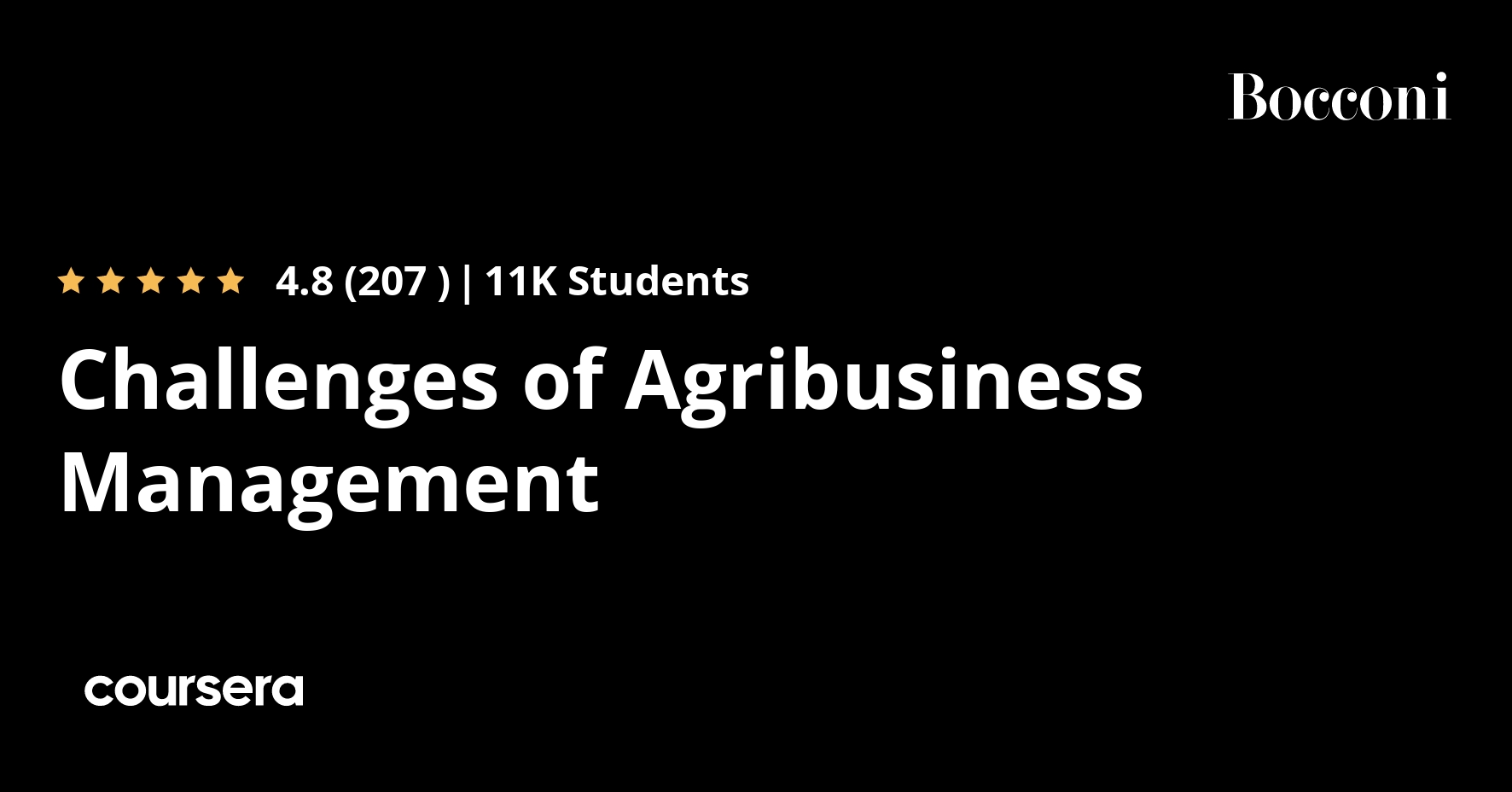Description
The goal of this course is to understand the challenges and opportunities of agribusiness nowadays. From farms to retailers, from input providers to traders, all the diverse players of this value chain interact a complex business environment in which nature, policy, technology and management strategies have to be considered to overcome future challenges and seize upcoming opportunities.
To understand such complexity we will take Italy as a large, open-air lab in which all major phenomena and business dynamics influencing agribusiness worldwide coexist and clearly show their effects. History, heritage and tradition, technology and innovation, brilliant farmers and multinational companies, all in a constrained, diverse physical and business landscape, Italy is the perfect sampling area for agribusiness.
In our learning experience we will benefit from the knowledge and experience of different Bocconi University Professors and several CEOs and top executives who are re-shaping agribusiness concepts.
Course Syllabus:
Week 1: Heritage and Excellence in Italian Agriculture
Week 2: Challenges of the Global Agro-System
Week 3: Innovation in Agribusiness
Week 4: Developing new business concepts
What you will learn
Challenges of the Global Agro-System
The week focuses its attention on the challenges of the global agro-system. Population growth, income growth, transition of emergent economies toward a high-calorie diet: all these levers increase the demand for food. At the same time, climate change and its consequences threaten the production of sufficient food to feed the world. Another theme investigated during the first week is the process of commoditization that characterizes agricultural products. Firstly, distinctive aspects of commodities are analysed. At a later stage, the impact of industrialization and economy of services on price transmission along the agro-food value chain is discussed.
Global Agribusiness
The second week gives an overview of actual agribusiness competitive dynamics focusing on the role and features of each player of the supply chain. Then, the five largest agricultural systems in the world are examined (Europe, US, Brazil, China and India). Each agricultural system is explained going through its history, evolution and main features in terms of typical productions, commercial relations, trends and dynamics that will affect it in the years to come. The final part of the week deepens the Italian agricultural system. The conditions, skills and competences that have allowed Italy to become the first country in the world in terms of quality agri-food products are discussed and summarized.
Sustainability in Agribusiness
The third week is about sustainability in agriculture. Sustainable agriculture contributes to all four pillars of food security (availability, access, utilization and stability) and to the three dimensions of sustainability: environmental, social and economic. In the first part of the week, the focus is on sustainable practices and techniques such as crop rotation, organic farming and integrated pest management. Then, the role of farms as actors that enhance ecosystem services is deepened. Later, the multiple benefits of cooperation and aggregation from small-scale farmers point of view are discussed.
Innovation in Agribusiness
The fourth week deals with innovation in the agribusiness industry. The basics in the discipline of Innovation Management are provided, such as the difference between innovation and invention and the ingredients for a successful innovation process. Later, the focus shifts on the growing importance of services for companies and the concept of “servicization” is explained. Then, the agrifood industry main innovation trajectories (i.e. vertical farming, biotechnologies, digitalization and big data, satellites) are analysed through a series of interviews with industry players that represent the above mentioned trends.






